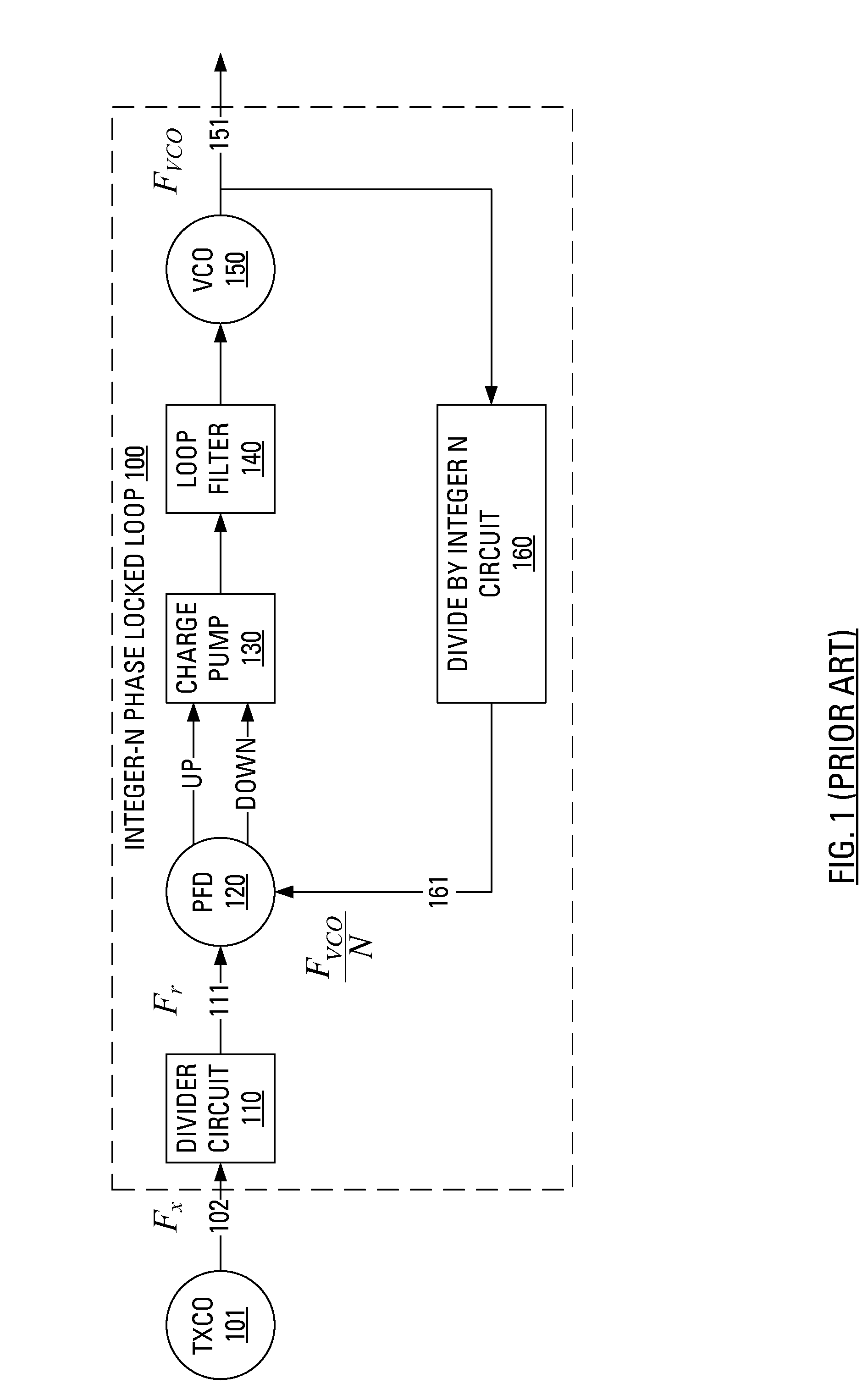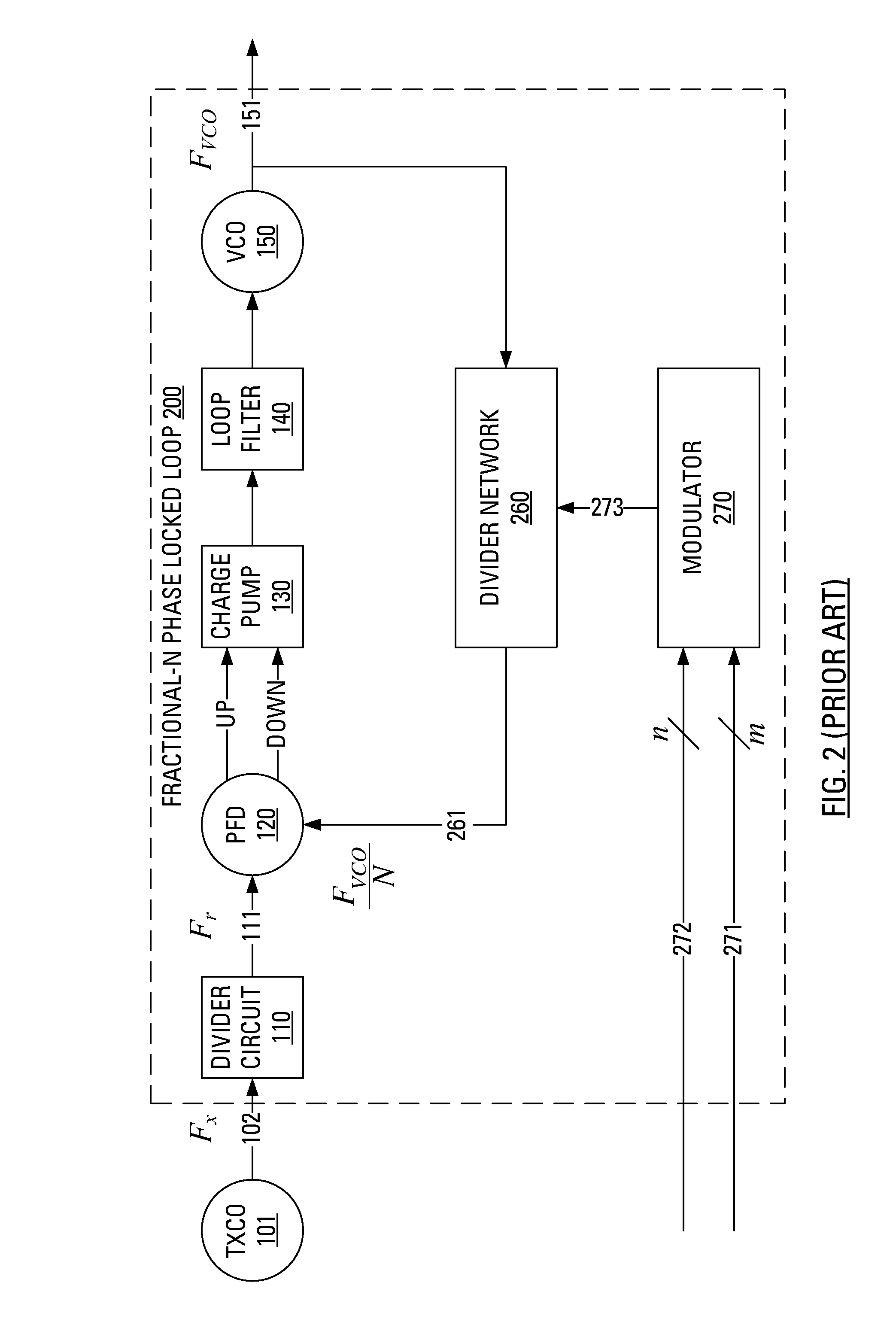Circuit and method for glitch correction
a glitch correction and circuit technology, applied in the direction of angle modulation details, electrical apparatus, angle modulation, etc., can solve the problem that the wireless communication system is not presently capable of directly processing and generating radio frequency (rf) signals
- Summary
- Abstract
- Description
- Claims
- Application Information
AI Technical Summary
Benefits of technology
Problems solved by technology
Method used
Image
Examples
Embodiment Construction
[0030]A conventional integer-N PLL 100 is shown in prior art FIG. 1. The conventional integer-N PLL 100 employs a phase frequency detector (PFD) 120 having, as inputs, a reference signal 111 (with a “reference” frequency Fr) and a feedback signal 161. The PFD 120 has, as outputs, phase control signals (UP / DOWN). The conventional integer-N PLL 100 also employs a VCO 150 and a divide by integer N circuit 160 (a divider network) that operates, on a signal 151 output from the VCO 150 with “output” frequency FVCO, to generate the feedback signal 161. Typically, a charge pump 130 and a loop filter 140 are interposed between the output of the PFD 120 and the input of the VCO 150.
[0031]In operation, the phase control signals (UP / DOWN) generated by the PFD 120 depend upon the phase and frequency differences between the reference signal 111 and the feedback signal 161. The phase control signals (UP / DOWN) generated by the PFD 120 are provided to the charge pump 130 and the resultant output of ...
PUM
 Login to View More
Login to View More Abstract
Description
Claims
Application Information
 Login to View More
Login to View More - R&D
- Intellectual Property
- Life Sciences
- Materials
- Tech Scout
- Unparalleled Data Quality
- Higher Quality Content
- 60% Fewer Hallucinations
Browse by: Latest US Patents, China's latest patents, Technical Efficacy Thesaurus, Application Domain, Technology Topic, Popular Technical Reports.
© 2025 PatSnap. All rights reserved.Legal|Privacy policy|Modern Slavery Act Transparency Statement|Sitemap|About US| Contact US: help@patsnap.com



